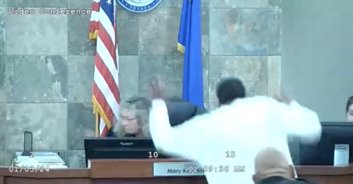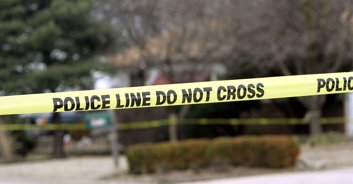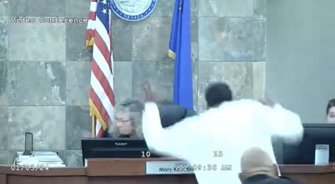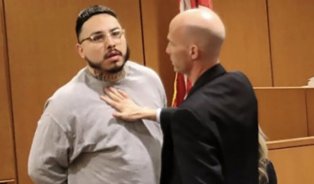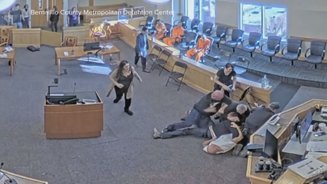On 29 October, 2012, a drunken altercation between George Ortiz and Anthony Blas Yepez left Ortiz dead. Yepez was living in Santa Fe, New Mexico, with his girlfriend and her adoptive mother’s boyfriend, the 75-year-old George Ortiz. While the testimony of Yepez’s girlfriend was sympathetic towards him, one fact could not be ignored. Anthony Blas Yepez had killed an old man in a fit of rage.
The testimony from his girlfriend was also important because Yepez claimed he couldn’t remember much of the incident - and didn’t fully understand why he had reacted the way he did. Upon learning that he had a rare genetic abnormality linked to sudden, unrestrained violence, he claimed that he wasn’t entirely in control of his actions during the incident.
Hoping for leniency, this was functionally similar to pleading insanity - and those assessing the situation had to come at it with a healthy amount of scepticism. Perhaps even more so because it was Yepez’s lawyer who had alerted him to this possibility.
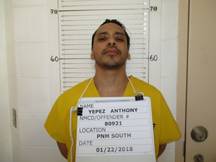
Ian Loyd, a public defender, had been assigned to Yepez’s case when he attended a conference in Washington. By chance, he found himself listening to a talk about a genetic abnormality which makes carriers more predisposed to violent outbursts. “Maybe he’s got this gene too,” Loyd recalls thinking.
The speaker, forensic psychiatrist William Bernet, explained that this was the so-called "warrior gene". Specifically, it is a deficiency of the MAO-A gene, which produces an enzyme key to regulating violent behaviour in men. After 15 years of research, it was first documented in a Dutch family - in which all the men were predisposed to violent outbursts - in 1993.
Bernet told a story about a man on trial for murder in Tennessee who successfully avoided the death penalty because he had suffered abuse as a child and had this rare genetic abnormality. This 2009 jury decision could hopefully set a precedent for Yepez’s case - if he did have the condition.

Home genetics testing companies have started selling kits to determine whether or not one has this “warrior gene”. (Here, it is linked to performance in sports and business, rather than murder and violent crime.) Loyd bought a kit from FamilyTreeDNA and visited Yepez at the Santa Fe County jail, where he swabbed his cheek for cells. Sure enough, Yepez had the MAO-A mutation. “This is the defence I want to pursue,” Loyd told his client.
However, despite this breakthrough, the process would be far from straightforward. Neuroscience evidence, presented in favour of a defendant, is only successful around 20 per cent of the time, according to a recent study. Furthermore, the defence is usually only successful when the victim also suffered childhood abuse.
“The law at the moment exists in this grey zone where everyone acknowledges that both genetic and environmental factors could affect culpability,” explains Vanderbilt University law professor Owen Jones. “But how do you know when, and how much?”

The results of the FamilyTreeDNA test didn’t hold up in court. But Loyd contacted Bernet, from whom he had originally heard about the condition, who suggested using a geneticist to carry out more extensive testing. The geneticist, David Lightfoot, consequently stated that there was “no doubt” that Yepez had the MAO-A deficiency. Meanwhile, a psychologist had unearthed abuse in Yepez’s childhood, including being beaten with a belt buckle.
During a pretrial hearing in January 2015, a doctor stated that the condition made Yepez “predisposed to committing violent behaviour.” However, prosecutors argued that the science was unreliable and the judge chose not to allow the defence.
Indeed, it has been a long process for Yepez. “I concur in the majority's decision to affirm Defendant's convictions, but I do not join its ruling that the district court improperly excluded the expert testimony that Defendant proffered at trial, because a decision on that issue is not necessary to resolve this case,” concluded Judge Emil Kiehne in July of last year.

“In the district court, Defendant offered the expert testimony in question solely to support his defence to the first-degree murder charge,” Judge Kiehne explained. “The jury, however, acquitted Defendant on that charge. Thus, it is not necessary for us to decide whether the district court improperly excluded evidence that would have supported a defence to first-degree murder.“
“Defendant now argues that the expert testimony was also relevant to support his defence to the second-degree murder, voluntary manslaughter, and involuntary manslaughter charges,” he added. “Although Defendant appears not to have preserved this claim in the district court, the State does not argue that we should deem this claim waived. Thus, I believe it is appropriate for this Court to decide it. But the majority's ruling that the proffered expert testimony could not have supported a defence to those charges as a matter of law fully (and correctly) disposes of this claim. The majority's lengthy analysis of the district court's decision to exclude the expert testimony is therefore unnecessary.”
This was just one chapter in what has been a long and turbulent story throughout which Yepez’s likelihood of leniency has been damaged by what he did immediately after the incident occurred. “Defendant called to Sandoval [Yepez’s girlfriend], and when she came out of her room, there was blood on the floor,” court documents explain. “Sandoval believed Victim was dead. He was motionless, his eyes were open, and he was not breathing. Defendant tried to calm Sandoval down and told her they ‘had to get rid of the evidence and the body.’ Defendant went to the kitchen, returned with a bottle of cooking oil, and handed it to Sandoval. She took the bottle and dumped the oil around Victim’s body. Sandoval saw Defendant light a piece of paper with a lighter but did not see him set fire to Victim’s body.”

The document continues: “Rachel [Sandoval’s cousin] testified that Sandoval told her, ‘My dad’s dead.’ Rachel asked if Sandoval was sure, and Sandoval responded, ‘Yes, he’s dead.’ Rachel asked how she knew and she testified that Sandoval said, ‘Because [we] burned him.’ The next day, after going to Victim’s apartment and looking inside, Rachel called 911.”
Yepez’s character profile was improved somewhat by Sandoval’s testimony. She stated that Ortiz was regularly aggressive and sometimes physically violent towards her. However, as Yepez’s accomplice, it was perhaps in her interest to play this card. The autopsy concluded that her stepfather’s death was caused by “homicidal violence” and “thermal injuries”. The recorded manner of death was “homicide”.
Last Autumn, Yepez was granted a Supreme Court hearing. The decision is still six months away but, if his 22-year jail sentence is reduced, it will be a pivotal moment in the longstanding debate over whether it is predominantly nature or nurture that informs one’s character and, indeed, one's actions.

